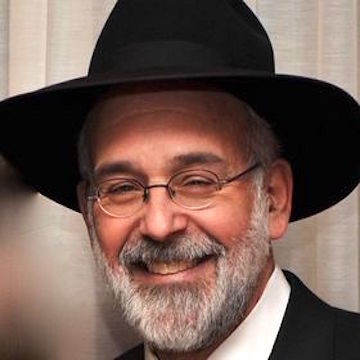Rabbi David Etengoff
336 results total, viewing 101 - 110
|
Why is “vayikra,” the first word of our parasha and the namesake of Sefer Vayikra, written with a diminutive aleph as its final letter? In his commentary on the Torah entitled Ba’al …
more
By Rabbi David Etengoff
|
3/22/23
|
|
T he Festival of Sukkot contains two major mitzvot — dwelling in the Succah on the night of the 15th of Tishrei, and the taking of the Arba’at HaMinim. These acts are in the halachic …
more
By Rabbi David Etengoff
|
9/27/23
|
|
The primary focus of our parshiot, Tazria-Metzora, is the illness known as tzara’at. The unique nature of this disease is emphasized by the Rashbam who said that in this matter we may not …
more
By Rabbi David Etengoff
|
4/15/21
|
|
This is the final Shabbat of 5777. We have been listening to the sound of the shofar each weekday morning throughout the month of Elul. This Motzai Shabbat, we will begin the recitation of Selichot …
more
By Rabbi David Etengoff
|
9/13/17
|
|
Parashat Nitzavim, the concluding Torah portion of 5782 and the prelude to Rosh Hashana, promises that Hashem will gather us unto Him, regardless of how far away we may be:
Even if your exiles …
more
By Rabbi David Etengoff
|
9/22/22
|
|
The end of parasha Beshalach focuses on the epic battle between our nascent nation and the marauding desert tribe of Amalek:
“Amalek came and fought with Israel in Rephidim. So Moses said to …
more
By Rabbi David Etengoff
|
1/20/16
|
|
Our parasha, Shoftim, begins with the celebrated words, “Shoftim v’shotrim teeten lecha b’chol sh’arecha” (“You shall set up judges and law enforcement …
more
By Rabbi David Etengoff
|
9/6/19
|
|
You [Moshe] shall make a washstand (kiyor) of copper and its base of copper for washing, and you shall place it between the Tent of Meeting and the altar, and you shall put water therein. (Sefer Shemot 30:18)
And he [Bezalel] made the washstand (hakiyor) of copper and its base of copper from the mirrors of the women who had set up the legions, who congregated at the entrance of the tent of meeting. (Ibid. 38:8)
He [Moshe] placed the washstand (hakiyor) between the Tent of Meeting and the altar, and there he put water for washing.
more
By Rabbi David Etengoff
|
3/7/13
|
|
According to the Rambam’s list of Taryag Mitzvot (613 Commandments) found in his Sefer HaMitzvot, there are four distinct commandments that focus on the prohibition of chametz. The first two …
more
By Rabbi David Etengoff
|
4/7/17
|
|
Chanukah and Purim, the two rabbinically based chagim , are joyous days of celebration and giving thanks to Hashem.
Rabbi Joseph B. Soloveitchik zt”l said “Purim and Chanukah …
more
By Rabbi David Etengoff
|
12/6/23
|

 48.0°,
Overcast
48.0°,
Overcast 